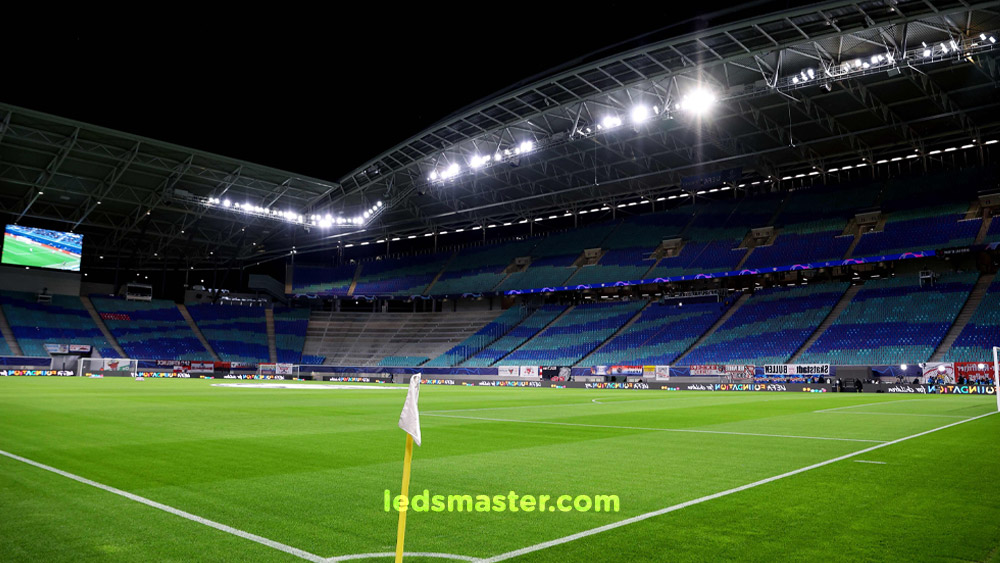Table of Contents
ToggleIntroduction
Lumen output plays a pivotal role in stadium lighting. When procuring stadium lights, the primary consideration is ensuring an adequate lumen output. Inadequate lumens can result in lower lux values on the football field, adversely impacting player performance. The question then arises: how many lumens are necessary for football stadium lighting? The succinct answer is: it varies based on the level of competition and the layout of light poles. Lumens required for illuminating a football field can range from 3,000,000lm to 22,500,000lm, depending on specific lighting needs.

Optimal Lumen Requirement for Illuminating Football Fields
| Level of competitions | Lux required | Lumen required |
| Recreational | 200 lux | 3,000,000lm |
| Training | 250 lux | 3,750,000lm |
| Amateur competition | 300 to 500 lux | 7,500,000lm |
| High school football field, professional | 500 lux to 750 lux | 11,250,000lm |
| National broadcasting football matches | 1000 lux to 1500 lux | 22,500,000lm |
| International broadcasting, 4KTV | 1500 lux horizontal, with vertical illumination requirement | > 22,500,000lm |
Based on the table provided, it’s evident that the required lumens for illuminating football fields escalate with the level of competition. For community football fields, approximately 3 million lumens might suffice, whereas high school football pitches may necessitate over 10 million lumens. Consequently, a single value cannot serve as a reliable indicator when determining the necessary lumens.
Height of Light Pole Impacts Football Field Lighting Lumens
When planning the lighting scheme for football fields, the height at which the light poles are installed holds significant importance. This factor directly impacts the distribution and effectiveness of light across the playing area. Football field lighting systems can vary widely, with some installations featuring poles at heights of 15 meters while others reach heights exceeding 30 meters. It’s crucial to acknowledge that as the height of the poles increases, the potential for light loss also escalates. This loss can be considerable, particularly with poles surpassing the 30-meter threshold. To mitigate this effect and ensure sufficient illumination, additional lumens may be necessary to compensate for the diminished light output at greater heights. Seeking professional guidance and expertise in lighting design can prove invaluable in optimizing the illumination levels and performance of football fields. For personalized assistance and insights tailored to your specific requirements, don’t hesitate to reach out to our support team for a complimentary lighting design consultation.
Lumen for LED Replacement
Transitioning to LED lighting for football stadiums presents several compelling advantages, foremost among them being the potential for significant reductions in both wattage and operational costs. In many cases, LED fixtures can deliver equivalent or even higher lumen output compared to traditional metal halide lights while consuming substantially less power. For instance, a 50,000 lumens LED fixture may replace a 1500-watt metal halide light, showcasing the efficiency gains attainable through LED technology. However, the feasibility of this transition hinges on factors such as the original lumens of the metal halide lights and the specific lighting requirements of the stadium. Should a brighter football field be desired, an adjustment in lighting lumens becomes necessary to ensure optimal visibility and performance.
One of the inherent drawbacks of traditional HID lamps, such as metal halide bulbs, is their omnidirectional light emission, which often leads to significant light wastage without proper reflectors. In contrast, LEDs address this issue adeptly by employing optics with adjustable beam angles, including 90, 45, or 15 degrees, to precisely concentrate the light beam for football stadium illumination. This feature proves particularly vital for standard football fields where achieving uniform and extended light coverage across distances of 50 to 80 meters is imperative for optimal gameplay visibility. By minimizing light wastage and maximizing light distribution efficiency, LED lighting systems enhance both the quality and effectiveness of stadium illumination.
Moreover, LED stadium lighting offers exceptional durability and resilience, capable of withstanding a wide range of environmental conditions, including extreme temperatures and inclement weather such as hot summers, cold winters, and even snowy conditions. The solid-state design of LED lights ensures robust performance and longevity, with lifespans typically ranging from 100,000 to 120,000 hours. This extended lifespan not only reduces maintenance frequency and costs but also enhances the overall reliability and sustainability of the stadium lighting infrastructure, ensuring consistent and high-quality illumination for athletes and spectators alike over the long term.
Understanding Lumen
Lumen serves as a critical metric in understanding the brightness or intensity of light emitted by a source, such as LED lighting. It quantifies the total visible light output, providing a standardized measure for comparing the brightness of different light sources. In simpler terms, higher lumens indicate brighter lights, making it easier for consumers to select lighting options that meet their illumination needs. However, it’s essential to recognize that lumens solely measure visible light and do not account for other spectra, such as infrared or ultraviolet light, which may also be emitted by certain light sources. This distinction is important, as it ensures that the measurement accurately reflects the visible brightness perceived by humans, aiding in informed decisions when choosing lighting solutions for various applications.
Lumen vs Lux
Lumen and lux serve distinct yet interconnected roles in understanding and designing lighting systems. Lumen, representing the total output of visible light from a source, defines its brightness or intensity. In contrast, lux measures the density of light flux per unit area, indicating the illuminance or brightness experienced at a specific location. This relationship becomes clearer when considering an example: if 100 lumens of light are directed to illuminate a 1 square meter section of a football field, the resulting illuminance, measured in lux, would be 100. This means that within that area, there would be 100 units of illuminance, reflecting the intensity of light reaching the surface and influencing visibility and performance in applications like sports lighting.
Lumen vs Watt
In discerning between lumen and watt, we uncover a fundamental relationship crucial in assessing the efficiency of lighting systems. A particular wattage of LED lights can emit a specific quantity of lumens, exemplified by the scenario where a single 1000-watt LED produces 180,000 lumens. This scenario demonstrates the LED lights’ luminous efficacy, calculated at 180 lumens per watt, signifying how effectively they convert electrical power into visible light. When comparing the luminous output of various football stadium lights, evaluating lumens per watt offers valuable insight into lighting efficiency. By selecting lights with higher lumens per watt ratios, stadiums can potentially reduce operational costs, as these lights consume less power while delivering sufficient illumination, thus optimizing energy usage and promoting sustainability.
Conclusion
Lumen output is crucial for effective stadium lighting, particularly in football fields where visibility impacts player performance. The required lumens vary based on the level of competition and light pole height. LED lighting offers advantages such as energy efficiency, customizable beam angles, and durability compared to traditional HID lamps. Understanding concepts like lumen, lux, and watt helps in designing efficient lighting systems, ensuring optimal illumination for various applications while minimizing operational costs and promoting sustainability.

